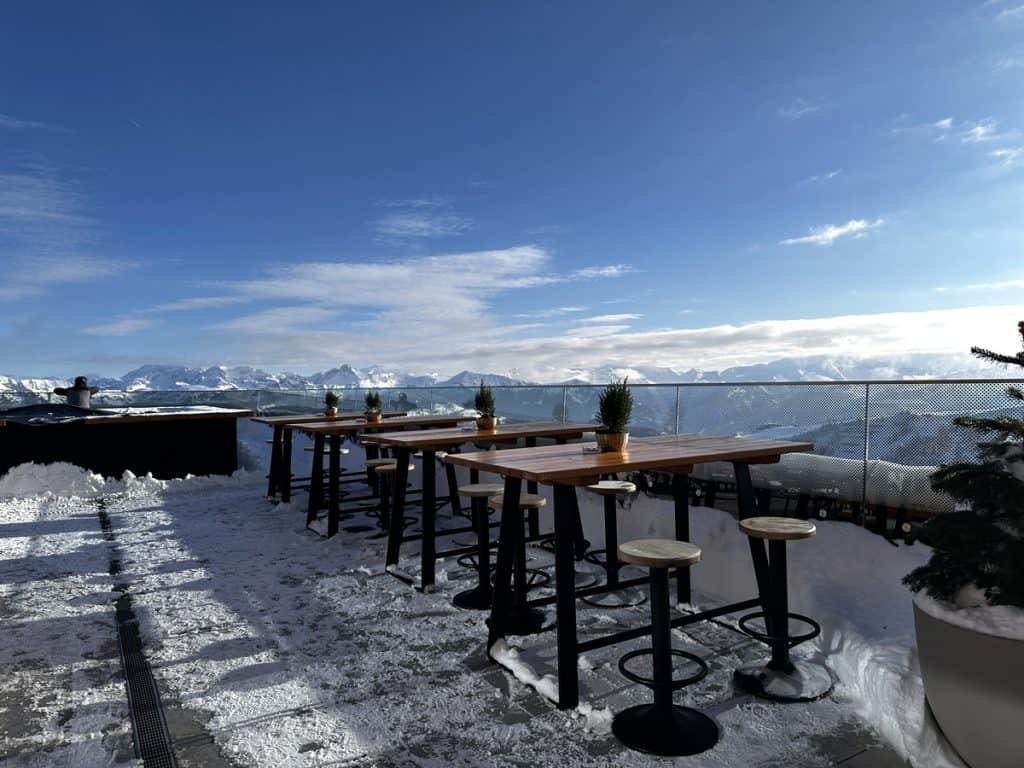

Group ski holidays can be the ultimate winter getaway as its a really fun way to enjoy the snow with friends and family. But trip planning for multiple people, especially with different skill levels and needs can be a bit tricky.
Budgeting for your trip and Cost-Saving Strategies
The first step to organising any group trip is to set a budget that is affordable for everyone. You need this to narrow down the choices of when and where to go for this ski holiday. Skiing isn’t cheap, and group trips have more moving parts than a Swiss watch.
For first timers, they are probably unaware of all the extra costs of a self-planned ski trip. You will need to factor in accommodation, lift passes, equipment hire, ski lessons or ski guiding, meals and travel costs early on to avoid surprises later. For those looking to keep costs in check, group ski holidays can be more affordable when you have done your research before booking.
You can create a group spreadsheet with the estimated costs of the whole holiday and get everyone’s input. But just know that doing it this way can cause you more headaches than it’s worth. The best way is to get everyone to agree on a budget, add their ski trip requirements and nominate someone from the group to do the bookings.

Consider travelling during off-peak weeks (avoid school holidays, half-term dates as prices can be double that of other weeks), book early to access discounts, and explore all-inclusive packages that bundle accommodation, meals, lift passes, and lessons together.
Companies like Club Med offer all-inclusive ski holidays, which means you don’t have to pay extra for ski hire, si lessons, meals, kids club and entertainment in the evenings. They even guarantee snow, so if your resort doesn;t have enough snow to ski on, they will transport you to the nearest ski resort that does.
Some package ski holidays might seem pricey upfront, but when accommodation, meals, lift passes, and lessons are bundled together, they often work out cheaper than piecing everything together separately. Most resorts have a sort of dynamic pricing for lift passes too, so the earlier you buy in the season, the cheaper it is.

Look for interconnected resorts with well-linked ski areas and a good spread of green, blue, red, and black pistes. Destinations such as Les Arcs, La Plagne, or Morzine are great examples of resorts offering variety in terrain, lessons for all levels, and plenty of alternative activities. Those resorts have hundreds of miles of runs that the more advanced in the group will not have to repeat the same runs during the week.
Also consider on-site amenities such as childcare services, kids club for the younger kids, ski schools, and activities for non-skiers like spas, tobogganing, or snowshoeing.
Choosing Where to Stay
Your accommodation can make or break the trip. Ski-in, ski-out properties are great for convenience and saving a lot of time. You don’t want to spend an hour every morning walking across town in ski boots and catching buses to the lifts. To be able to ski off from your doorstep is the best option. The same at the end of the day, if you can ski back to the accommodation, you can ski until late in the afternoon and not have to worry about not catching the last lift back down from the mountain.
Catered chalets work brilliantly for groups. You get your own private space to spread out, someone else does the cooking, there’s cake when you get back in the afternoon and there’s usually a proper dining table where everyone can gather for dinner and plan the next day’s adventures. Just make sure there are enough bedrooms and bathrooms as sharing facilities with ten people gets old fast.

Family friendly ski hotels are another option. They often have big suites or interconnected rooms for families. Hotels like Das Edelweiss in Austria have a massive spa complex with indoor and outdoor pools, spas and treatment rooms. To keep the kids entertained, they have indoor slides and games rooms too.
Check what’s included too. Some places provide everything from towels to ski passes, whilst others leave you scrambling for basics at inflated resort prices.
Keeing the group updated
Group trips succeed or fail on organisation, and the bigger the group, the more critical this becomes. Delegate responsibilities early, put one person in charge of bookings, another on food duty, and someone else handling transport. Don’t try to do everything yourself, you’ll go mad.
Set up a WhatsApp group (or whatever messaging app that the whole group will use) and use it regularly. Share booking confirmations, weather updates, and those inevitable “where are we meeting?” messages.
Create a shared itinerary with all the important details like lift pass collection times, ski times, dinner reservations, activity bookings, and key contact info. Shared Google Sheets work well for this. The more information everyone has upfront, the fewer panicked phone calls you’ll get and the less hand-holding you will have to do.
Ski trip planning tips

Whether you’re heading to the Alps with a big group of intrepid female travellers or planning a family-filled snow adventure, group ski holidays are all about balance, balancing budgets, abilities, and expectations. Just remember these tips to help you plan your next group ski trip.
- Nominate a group leader or organiser – It helps to have one person coordinating bookings, collecting payments, and keeping everyone on the same page. A shared spreadsheet or planning app can be a lifesaver.
- Choose a resort that suits all abilities – Look for ski areas with a good mix of runs, beginner slopes, and off-piste options so no one feels left out or overwhelmed.
- Consider self-catering accommodation – Renting a chalet or apartment can be more budget-friendly and sociable, especially if you take turns cooking or plan a big dinner night in.
- Book ski hire and lessons in advance – Sorting this ahead of time avoids lengthy queues and ensures your group can hit the slopes together from day one.
- Plan some non-ski activities -Whether it’s spa time, tobogganing, or just a big pub night, it’s fun to break things up and give tired legs a rest.
With the right prep, clear communication, and a bit of flexibility, you can create a trip that everyone will remember long after the snow has melted.






